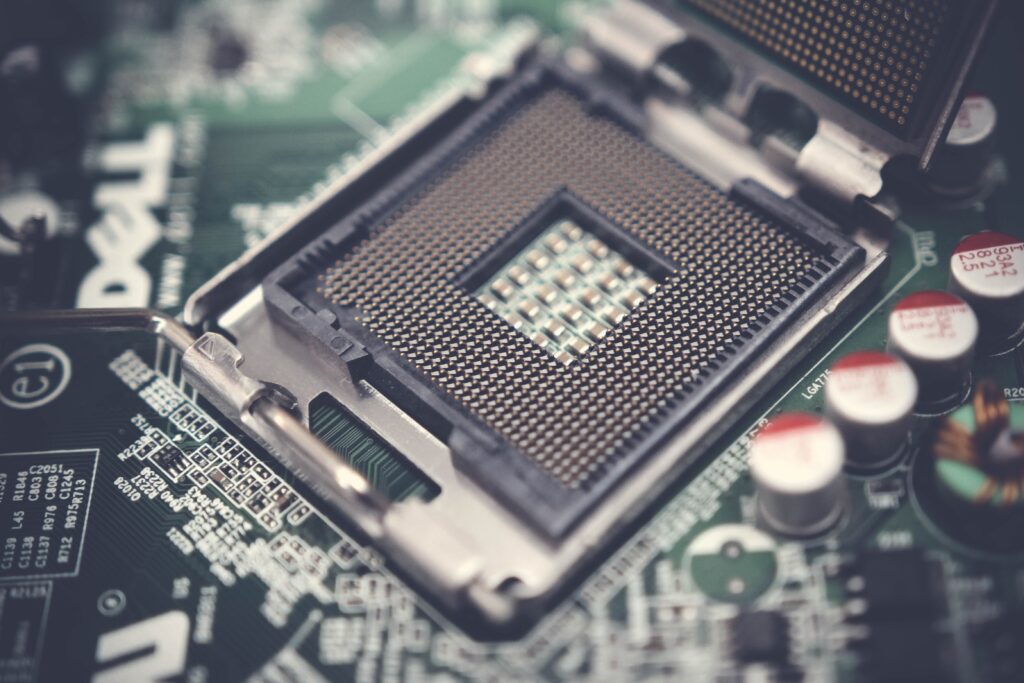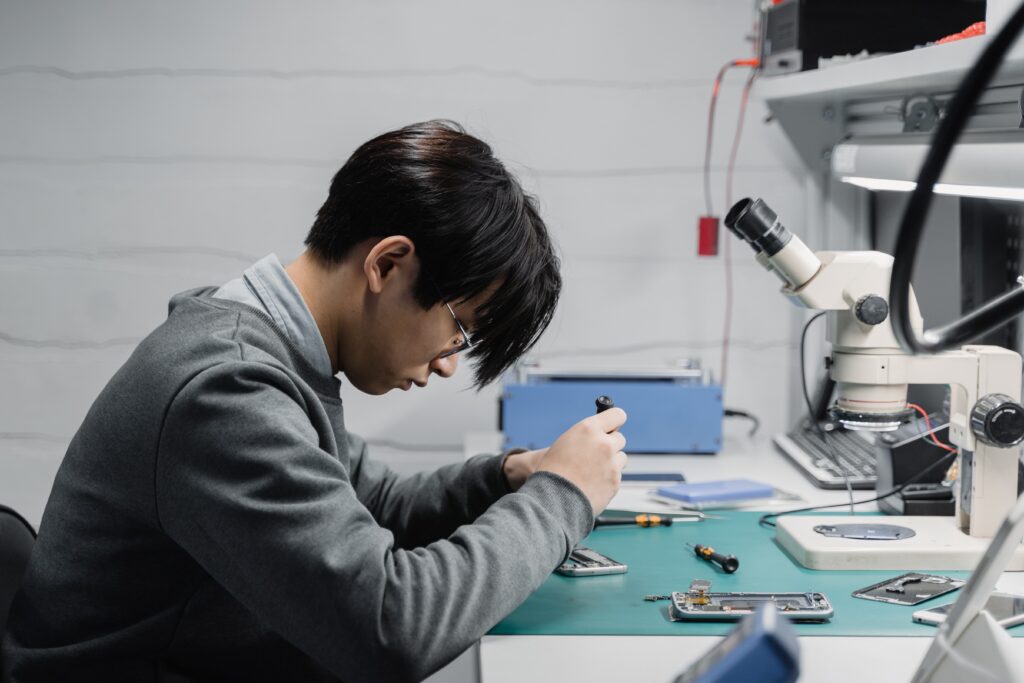Contact
Write to Us And We Would Be Happy to Advise You.
Do you have any questions, or would you like to speak directly with a representative?
By ren
One of the most critical stages in Printed Circuit Board (PCB) manufacture is circuit board assembling, i.e. Circuit Board Assembly. Because this is such a significant operation, PCB makers used to perform it in-house. However, due to the continuous rise of electronic items and new technological breakthroughs, service providers have set up shop and offer this process as a specialist service.
The electronic apparatus can be assembled with the PCBs in one of three ways:

The innovation, displayed during the 1960s and worked during the 1980s, is presently utilized by a few PCB assembly organizations. Parts having metal tabs that can be effectively patched to the PCBs are used in the methodology. The strategy gives expanded circuit densities when all the components are mounted on the two sides of the PCBs utilizing successful patching systems.
Plated through-opening innovation (PTH): Drilled openings are given on the PCBs used for this development. As the leads are placed into the penetrated slots, collecting the PCBs with the components.
It is also called a box-construct assembly; this approach assembles printed circuit sheets with electronic parts utilizing wire bridles, looms, metalwork, link assemblers, and formed plastics.
Industrial customers can get numerous benefits from using a circuit board assembling service. Some examples are provided below.
This point may be arguable because it relates to the customer's bottom line. If the customer invested in in-house assembly equipment, the equipment would be many, and the investment would be substantial. It makes more sense to employ a specialized circuit board assembly service provider because the customer may save money while receiving a high-quality PCB.
Design Enhancements: If there is ever a need to improve the circuit board design in the future, the service provider will be able to address this demand because he has already worked with the circuit board.
One significant advantage of using an external service provider is that they have years of experience working on substantial quantities of circuit boards. As a result, regardless of the amount of your order, they will be able to meet your shipping needs.
When it comes to electronic products like PCBs, one of the most critical aspects of success is quality. Many circuit board assembly service providers can provide the following services:
These variables ensure that the final circuit board meets worldwide standards and application requirements.

In the electronics sector, the phrases PCB and PCBA are both relevant. Some people use them interchangeably, but they are not the same thing.
The primary distinction between these two names is that PCB refers to a blank circuitry board, whereas PCBA refers to a board that contains all of the electronic components required for the board to function correctly. A PCB is not yet functional because it lacks the necessary details, but a PCBA is a complete and working board. PCBs and PCBAs are two distinct stages in the same process; a PCBA is produced on top of an existing PCB.
PCBs are the building blocks of modern electrical devices in the easiest language. They provide mechanical support and electrical connections for electronic components. The boards are made of laminate material, such as fiberglass or composite epoxy, and conductive channels connect different board areas. These paths are printed or engraved onto the board by the PCB design. In contrast, a PCBA is a completed PCB assembly with all the electronic components required to make the board function properly. Building the board with the appropriate features is also referred to as PCBA.
A PCBA cannot be created without a PCB. The first step is PCB manufacture, and PCBA manufacturing builds on that first step. Another distinction is the way PCBs and PCBAs are packaged. PCBs are commonly vacuum-packed, whereas PCBAs necessitate compartmental or anti-static packing.
Let’s comprehend the manufacturing process of PCBA in parts:
To begin with, the PCBA company adds solder paste to the printed circuit board. You must apply solder paste to specific board areas throughout this operation. That section contains many components.
The solder paste is made up of many small metal balls. Tin is the most often utilized substance in solder paste, accounting for 96.5 percent of the total. Silver and copper are the other components of solder paste, accounting for 3% and 0.5 percent, respectively.
The paste is combined with flux by the producer. Because flux is a chemical that aids in the melting and bonding of solder to the board surface, solder paste must be applied precisely and in the appropriate amounts. For distributing paste in the desired regions, the company employs a variety of applicators.
Read more: The Crucial Advantages of Printed Circuit Board Assembly
Following the successful completion of the first step, the pick and place machine must do the following task. Manufacturers use this process to place various electronic components and SMDs on a circuit board. SMDs are now responsible for non-connector board components. You will learn how to solder these SMDs to the board in the following steps.
To pick and arrange electronic components on the boards, you can utilize traditional or automated methods. Manufacturers use a pair of tweezers to position components on the board in the customary fashion. In the computerized process, machines, on the other hand, install components in the correct position.
Manufacturers solidify the solder paste after positioning the components correctly. They can complete this operation by using a "reflow" process. The manufacturing crew sends the boards to a conveyor belt throughout this operation.
The conveyor belt must travel through a big reflow oven. Furthermore, the reflow oven resembles a pizza oven. The oven has a handful of heaters with varying temperatures. The heaters then heat the boards to 250o C at various temperatures. This temperature melts the solder and turns it into solder paste.
After the components have been mounted during the reflow process, the board must be inspected for faults. Manufacturers additionally test the board's functionality during this process. Many boards have inadequate connections or get short during the reflow process. In other words, there could be a lot of connectivity issues during the initial phase.
So there are several methods for inspecting the circuit board for misalignments and faults. Here are some fantastic testing methods:
Manual inspection is still necessary even in this day and age of automated manufacturing and testing. On the other hand, manual checking is most effective for small-scale PCB PCBA. As a result, for big-scale PCBA circuit boards, this examination method becomes more incorrect and unworkable.
It is yet another approach for testing circuit boards. This method is less popular, but it is more successful when dealing with complex or layered circuit boards—the X-ray aids manufacturers in examining lower-layer issues.
If a fault is discovered using the abovementioned procedures, the manufacturing team either sends it back for rework or scraps it.
If the inspection reveals no flaws, the following step is to test its functionality. It means that testers will determine whether or not it meets the standards. As a result, the board may require calibration to evaluate its functionality.
Depending on the type of PCBA, the electronic components differ from board to board. For example, the boards could feature several sorts of PTH components.
Plated through-holes are a type of hole found on circuit boards. Components on circuit boards use these holes to route signals to and from different layers. Instead of utilizing paste, PTH components necessitate the use of specialized soldering procedures.
PCBAs are subjected to final examination when the PCB soldering process is completed. Manufacturers can pass circuit boards from earlier methods to install extra parts at any stage.
The most popular name for the last examination is functional testing. Testers put the circuit boards through their paces in this step. Furthermore, testers put the boards through their paces in the exact conditions that the circuit would be used.
For example, testers put the board through its paces with various voltages, signals, and currents. Circuit boards fail the test if they exhibit fluctuation or harmful behavior. As a result, circuit boards can be recycled or scrapped by manufacturers.
Different components and processes involve PCB assembly. Generating a blank board is more accessible than producing a completed PCBA. A PCBA also costs more to construct than a blank PCB. However, both stages are required to generate a finished board.
We hope this article will help you learn the far-reaching guide to circuit board assembly and the component placement of printed circuit boards in the assembly process electronics industry. The PCB assembly service, the entire board design process, PCB prototype, soldering equipment, and solder mask is now more clear to apprehend.
Do you have any questions, or would you like to speak directly with a representative?